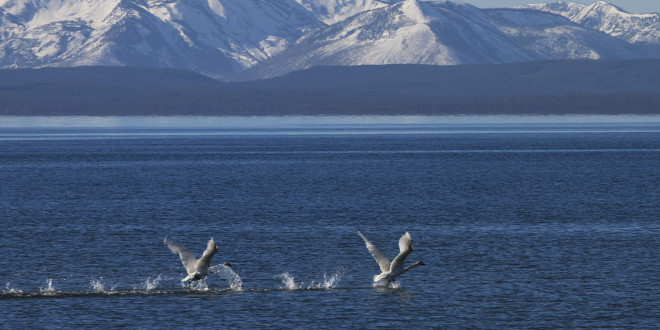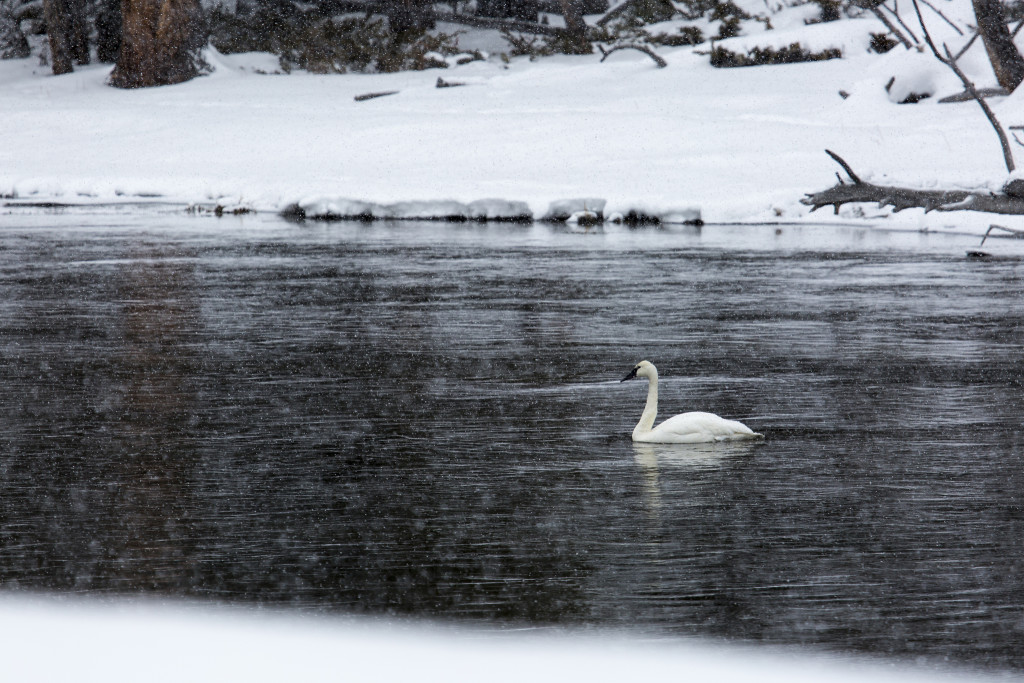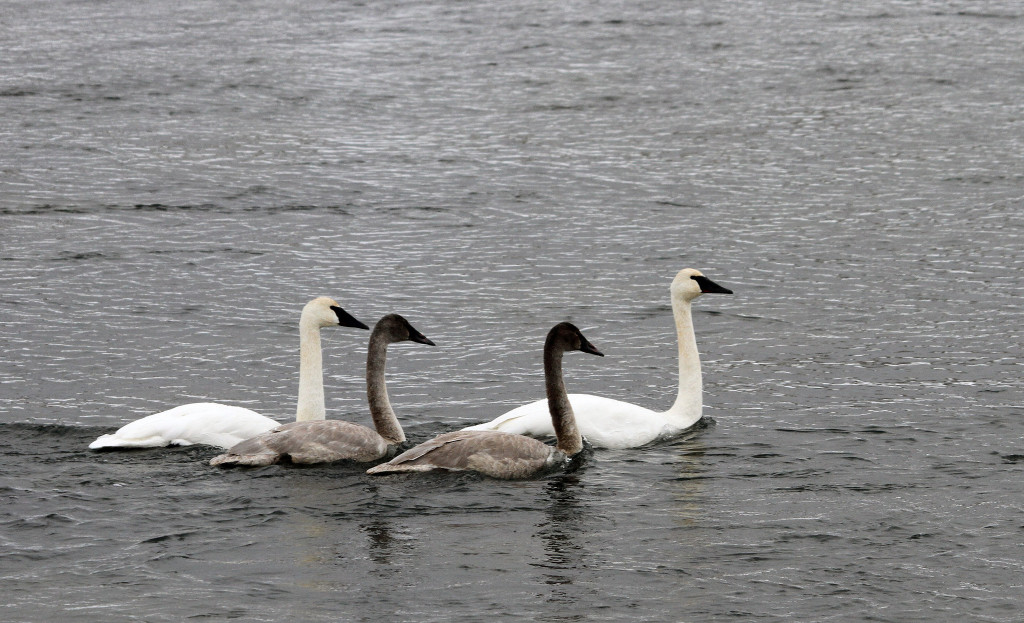A trumpeter swan is a marvelous thing to see in Yellowstone National Park.
North America’s largest waterfowl, the trumpeter swan was once prized game fowl, both for its meat and its soft feathers, heavily hunted in the 19th and 20th centuries. They were believed to be on the verge of extinction, gone from their original range (a band spanning roughly between Alaska and Missouri/Illinois/Indiana). By the 1930s, only small isolated islands of trumpeter swans were left, including a population of 70 in Yellowstone National Park.
Now, due to conservation/reintroduction efforts, including work done by the Trumpeter Swan Society, there are approximately 46,000 trumpeter swans in North America. Sadly, more and more, these swans are not being found in Yellowstone.
As of 2014, there were two breeding pairs of trumpeter swans and 6-10 non-breeding swans found regularly in Yellowstone. Over the past few years, swans have been released into the Hayden Valley with the hopes that they would take up residence and nest regularly.
Unfortunately, it seems Yellowstone National Park works better as a rest stop for swans than it does a home range, due to changes in wetlands distribution and bald eagle diets due to cutthroat trout populations.
The hope one day is, as trumpeter swans become more populous across North America, that they will either acclimate to Yellowstone or visit it more regularly as winter migrants i.e. “snowbirds.”
Basic Facts
- They are easily identified by their black bill, curving neck, and white feathers.
- They are not sexually dimorphic i.e. males and females do not differ greatly in size or plumage.
- Average wingspan measures between 72 and 96 inches.
- They are long-lived and can live as long as 24 years in the wild.
- Found in all seasons in the Greater Yellowstone Ecosystem.
Diet
- Favorite foods: submerged vegetation and aquatic invertebrates.
- Practices “dabbling:” tip their bodies into the water like a capsizing ship to snatch up food.
Pairing/Nesting
- Trumpeter swans mate for life.
- Start pairing between two and four years old.
- Do not usually nest until they are four to seven years old.
- Prefer slow-moving bodies of water or still lakes for nests.
- Nest consists of shore vegetation such as cattails and sedges and can take two weeks to build.
- Nesting sites often reused.
Reproduction
- Have low reproduction rates and are very sensitive to disturbance.
- Will sometimes forgo mating for a season if conditions are not right i.e. if they are disturbed by humans.
- Under right conditions, four to six eggs are laid in June.
- Incubation lasts 35 days on average.
Young Swans
- Young are called cygnets.
- Born with grayish down and pink bills.
- Begin swimming 24 hours after hatching.
- Cygnets are dirty white with gray-pink legs and gray-black bills (tip of bill will be pink).
- Grow quickly, but retain juvenile plumage until second winter.
- Start flying after three or four months.
Heed The Call
- Consists of a nasal honk or “trumpet.”
- Similar to the sound of a Canada Goose but sounds more resonant and hollow.
 Yellowstone Insider Your Complete Guide to America's First National Park
Yellowstone Insider Your Complete Guide to America's First National Park








You must be logged in to post a comment.